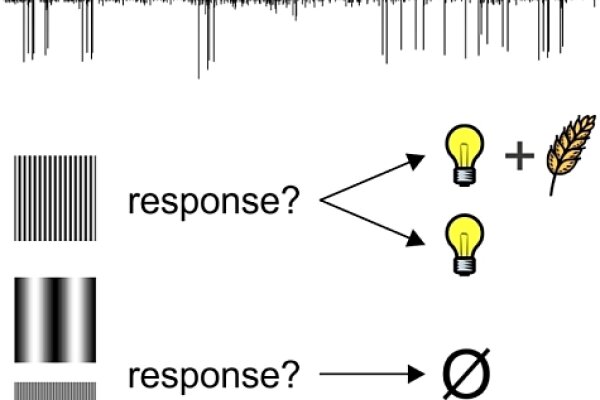2013-02-20

It is important to know which events in our environment are predictive of reward or punishment. For example, knowing that the sound of the doorbell signals postal delivery while the sound of the fire alarm requires leaving the house both inform us about the present state of our world as well as about appropriate actions to take. This ability to decide on a course of action given the current state of the world is implemented in a widely distributed neural network, and one suspected hot spot for decision making is the pigeon nidopallium caudolaterale (NCL).
In the present study, neurophysiologists from the biopsychology lab recorded single-unit activity in this forebrain area while animals were working on a visual discrimination task where responding or non-responding could lead to reward, punishment, or be inconsequential. A sophisticated analysis of the NCL neurons’ activation patterns revealed that these neurons represent information about the reward value of specific stimuli, instrumental actions as well as action outcomes, and therefore provide signals useful for adaptive behavior in dynamically changing environments.

It is important to know which events in our environment are predictive of reward or punishment. For example, knowing that the sound of the doorbell signals postal delivery while the sound of the fire alarm requires leaving the house both inform us about the present state of our world as well as about appropriate actions to take. This ability to decide on a course of action given the current state of the world is implemented in a widely distributed neural network, and one suspected hot spot for decision making is the pigeon nidopallium caudolaterale (NCL).
In the present study, neurophysiologists from the biopsychology lab recorded single-unit activity in this forebrain area while animals were working on a visual discrimination task where responding or non-responding could lead to reward, punishment, or be inconsequential. A sophisticated analysis of the NCL neurons’ activation patterns revealed that these neurons represent information about the reward value of specific stimuli, instrumental actions as well as action outcomes, and therefore provide signals useful for adaptive behavior in dynamically changing environments.